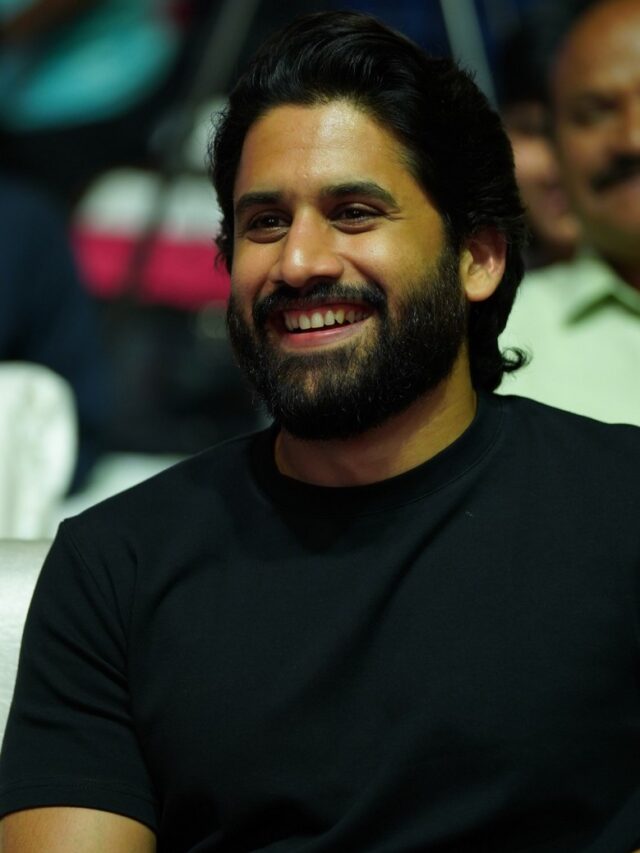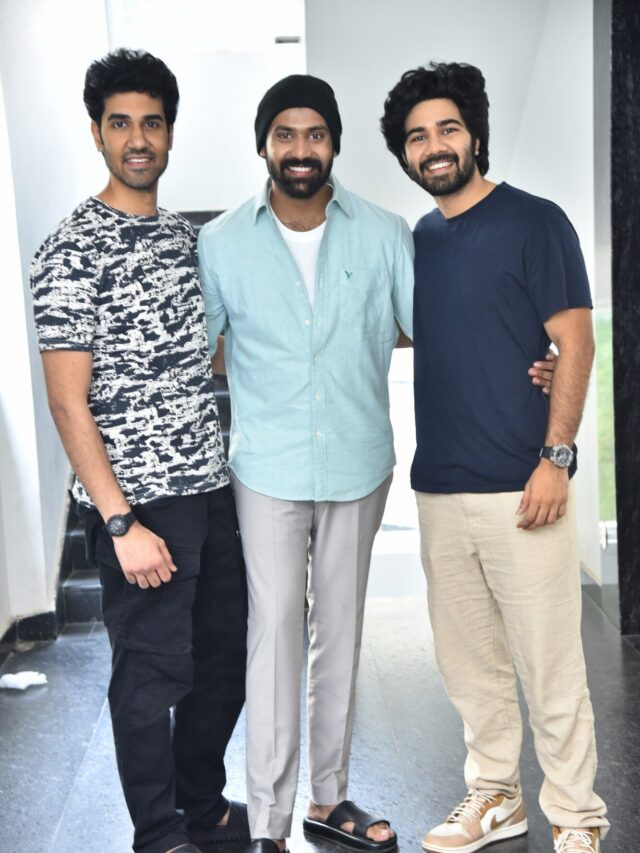Gunasekhar’s historical “Rudramadevi” reconstructs the astonishing saga of a legendary queen with authenticity and cinematic flourish but flaws remain.
Gunasekhar is a director with mettle who just lost his way making films based on stories concocted by others and hoping to repeat magic with star heroes. All that was until “Rudramadevi” happened. That item song in “Sainikudu” about “Orugullu ke pillaa” must have been seeded by some deep meditations about the historic city of Warangal and the improbable origins of the Kakatiya empire – the last of the empires after the Satavahanas ruled for nearly 450 years in the early part of the first 1000 years post-Christ. Once the story took shape, “Rudramadevi” has been in the works for almost as long as the other biopic “Bahubali”, if not earlier – to be precise, since 2005 or so according to the interviews given by the director with some forgettable films done recently with his room-mates. They came and bombed like a wet diwali cracker.
Normally, Gunasekhar’s films remind you of one of Hollywood’s greats like Cecille B Melle who made films like “Ten Commandments”. The films revolved around a well-etched story with elaborate screenplay and the story revolving around one historic monument authentically replicated. In “Okkadu”, he chose Charminar minarets. In “Arjun” he chose Meenakshi temple. In films like “Sainikudu” and “Mrugaraju”, he had long maneuverable bridges. But for “Rudramadevi”, he has the historic city of Warangal itself as the backdrop and chose Thota Tharani – the ace set designer to recreate the walled city of Warangal with impressive layout. He roped in Srikar Prasad, the accomplished editor and Maestro Ilaiyaraaja to score music and a starcast who almost came to work for a song – Allu Arjun who acted for free and stars like Anushka Shetty (title role), Rana Daggubati, Nitya Menen, Catherine and Prakash Raj. After putting such a galaxy of talent to work, he backed himself and produced it upfront with all that he had and got the financiers to finally release the film in four languages including Hindi, Malayalam and Tamil. Not just that, this became the first straight Telugu film with stereophonic 3D technology with a run time of 157 minutes.
For all the bravado and the effort, the film holds true to the promise for a good part of the duration by transporting us into what transpired in the 12th and 13th centuries in a kingdom besieged by untrustworthy allies, and wicked kings trying to usurp the Kakatiya kingdom. The narrative opens to a voice-over by Chiranjeevi as Marco Polo, the famed explorer of the world who wrote his famous travels on which most of the Western World’s history books are based on. Marco Polo tells his Italian court of Genoa king grappling with a birth of another girl as to how a remote kingdom of Kakatiya handled the crisis when a girl child is born into a kingdom infested with palace coups, ambitious rivals and crooked kin. They wouldn’t want the girl to become an impediment in a sexist land that wanted the rulers to be male progeny. That girl born to King Ganapatideva is named Rudramadevi but is introduced to the world outside the palace as RudraDeva until age 25. The story then unfolds with multiple twists and the machinations that make Rudramadevi the greatest queen that ever ruled South of Delhi.
To be fair, the film takes few liberties with the saga of the queen as seen through the eyes of a foreign traveller like Marco Polo but that is okay in a historical like this. Even “Titanic” had an enchanting love story embedded within a true story without an apology. The few characters that travel with the title role of Anushka alongwith the characterisation of Gona Ganna Reddy played brilliantly by Allu Arjun give the much-needed relief to the film’s narrative. Krishnam Raju as King Ganapatideva and Prakash Raj as the wise Prime Minister live up to their roles bright without any exaggeration. Because Prakash Raj is the most-cast actor in Guna’s films, he played the role with all the weight and maturity that creates impact. Allu Arjun as Gona Ganna Reddy has a tangy characterisation that is the paisa-vasool factor in the film with a dialect and an undertone that will be talked about for a long time. As the Robin Hood who robs the royal to pay the poor, Allu Arjun does ample justice to his role which has all the special attractions of romance, action and comedy in a memorable cameo that actually spans about 20-25 minutes in the overall film but comes with interjections at about four crucial points in the film before the climax. Rana Daggubati’s character is not well-etched even though he plays it with gusto as the lover of Rudramadevi. Nitya Menen should be congratulated for picking a role which conveys an important transition in the characterisation of Rudramadevi. Catherine is passable but registers her presence with the glamor in the song alongwith all the beautiful damsels in the cast.
The overall feel of the film is quite authentic and methodical in the research used on the life and times of Rudramadevi and uses good man-made and natural settings in both the songs and the running visuals to recreate the era. The insides of the palace, the battlefields, the society at large and the general view of the people look real and credible thanks to impeccable set design by Thota Tharani. The costumes of the royalty and the commoners are exquisitely reflective of the not-so-minimalistic sartorial habits of the South Indian royal dynasties which include the Pallavas and the Cholas. Although there is criticism about the make-up of Anushka Shetty, it must be noted that there is a purpose to the make-up during her years of being masqueraded as a youth – she had to look rugged and unglamorous to pass off as a male inheritor. When the final phase of her ascent to the throne happens with acceptance of her gender by the public, the swagger and the paraphernalia that accomplishes her looks is mighty impressive – probably the best we have seen in historicals, better than “Jodha Akbar”. Even the voice in the sequences that show her put-on act have a croaky accent that is well-timed.
What takes away from the film are a few points which the director might have missed in his pursuit of a magnum opus. Screenplay is a bit rusty and doesn’t show the edge of a director who gave wonderful films in the past with a racy output. Even when the situation demanded dramatisation like the birth of a girl child, or the confrontation with the villains, or the abandonment of her throne to seek solace in a temple, or the part that should have actually shown the greatness of Rudramadevi in administration or the benigness of her rule, the screenplay loses vital opportunities to characterise the quintessence of Rudramadevi who is known as the lion-hearted lady who commanded a landmass that includes the Godavari Valley, Rayalaseema, Kosta and the heart of Andhra. Whenever came a chance to show something bright on screen, Gunasekhar resorts to animation that looks like a slide show of sorts. Understandably, he must have run out of budgets to show the scenes that could be visually more scenic like construction of irrigation tanks, hospitals, roads etc. But he could have used the actual visuals of Warangal towards the end to highlight her noble deeds. For example, the road called Rudrama Devi Road or the steps leading to the Kanchu Kota are still considered nonpareil and non-duplicatable in today’s world. Even the seven layers of ring-fencing to the city of Warangal, the temples of Ramappa, the flagship arch that now adorns the official Telangana emblem were not well-represented. For a large part, you get a sense as if the screenplay got short-changed in favor of Allu Arjun’s next scene rather than concentrating on the grandeur of Rudramadevi. This is the central weakness of the film – and any insinuations of a more elaborate reprise in the sequel tentatively titled “PratapaRudrudu” do not justify the watered-down characterisation of Rudramadevi in the first part.
Talk about Ilaiyaraja’s music and you have to distinguish two things. One, the music for the songs is melodious and rhapsodic as one expects from the Maestro. But the choice of instrumentation in few romantic songs should have got taken care of what you expect in a period film like this. In one of the songs “Avuna Nijamena” or “Punnami”, the use of guitar and bass rhythms is not plausible especially when the Western influences were yet to pervade the kingdoms in the South. This is the facet that distinuishes a director like Asutosh Gowarikar from Gunasekhar. When Asutosh Gowarikar sat down with AR Rahman and Javed Akhtar for “Jodha Akbar”, he gave them a free hand but told them to give music that feels like it happened in the Moghal Era – hence uses of instruments like Santoor etc. But in this film, the songs especially some of the duet songs had too ornate instrumentation which didn’t seem real. A similar criticism was faced for a song or two during “Srirama Rajyam” which still had more authentic feel. The second thing to note, Ilaiyaraja’s background score didn’t sync well with the imagery of the film which is a big let-down for the fans of the Maestro. With all the underpinnings of the Budapest orchestra and what not, Maestro didn’t realise that the music in some scenes needn’t be there – sometimes silence is more eloquent than words or music like the scenes where a discussion is going on about a royal scheme, or the dilemmas of an ageing king on how to salvage the situation out of despondency. Most of the BGM scores concentrated on overtures of symphonic orchestra and that gave a stale and sometimes jarring feeling to those who kept score of his music. Considering that the Maestro has produced this film in Tamil, one hopes directors in future know how to punctuate his music in future – there’s a legacy of films that show the majesty of the maestro but this film doesn’t hold a candle to some of them.
The war scenes look ordinary and graphical images despite attempts to make it look eye-popping. They are not gripping, and the reason is most of the close shots of the queen and her generals clashing with the villains are shown in slow motion. With a handful of stunt masters including Peter Heins and Vijayan, wonder why so much laziness in fleshing a stunt to the last detail? In the case of “Bahubali”, who can forget that scene with Kattapa Satyaraj and Sudeep in which both of them aggrandise swords with amazing dexterity – a two minute sequence that has taken three months of rigorous training. Stunts are meant to be like that – fight like a man or a woman but make it feel like one -don’t use kid-gloves or slow visuals to buttress them! Dialogues are quite pithy and sharply-worded and must be complimented. Performance-wise Anushka Shetty pulls it off in both the transitory roles despite flaws in her characterisation. She shows no lack of effort ever. Once again, the ending in a period film looks like it has run out of steam and budgets before the inevitable suggestion of a sequel.
On the whole, the film is a good effort that doesn’t bore you despite the monotony of the screenplay. The 3-D effects truly look spectacular and uniformly spaced throughout the action sequences especially involving Allu Arjun. Surprisingly, the songs don’t give you a 3-D feel at all – maybe they are meant to be that way. The story is good but the emotions come surging within us only at few points in the film – again proof that Gunasekhar concentrated way too much on the form than substance. Despite all of that, one definitely comes away with a feeling of amazement and awe that a film of this quality has been made on a budget like this with so much commitment and passion. The Telugu film industry is the only film industry in India which has made both mythologicals and historicals in every generation. The last historical, to my mind, has again involved Krishnam Raju in “Tandra Paparayudu”. Gunasekhar must be lauded for the massive effort – that shows in every frame.
Rating : 3/5



































